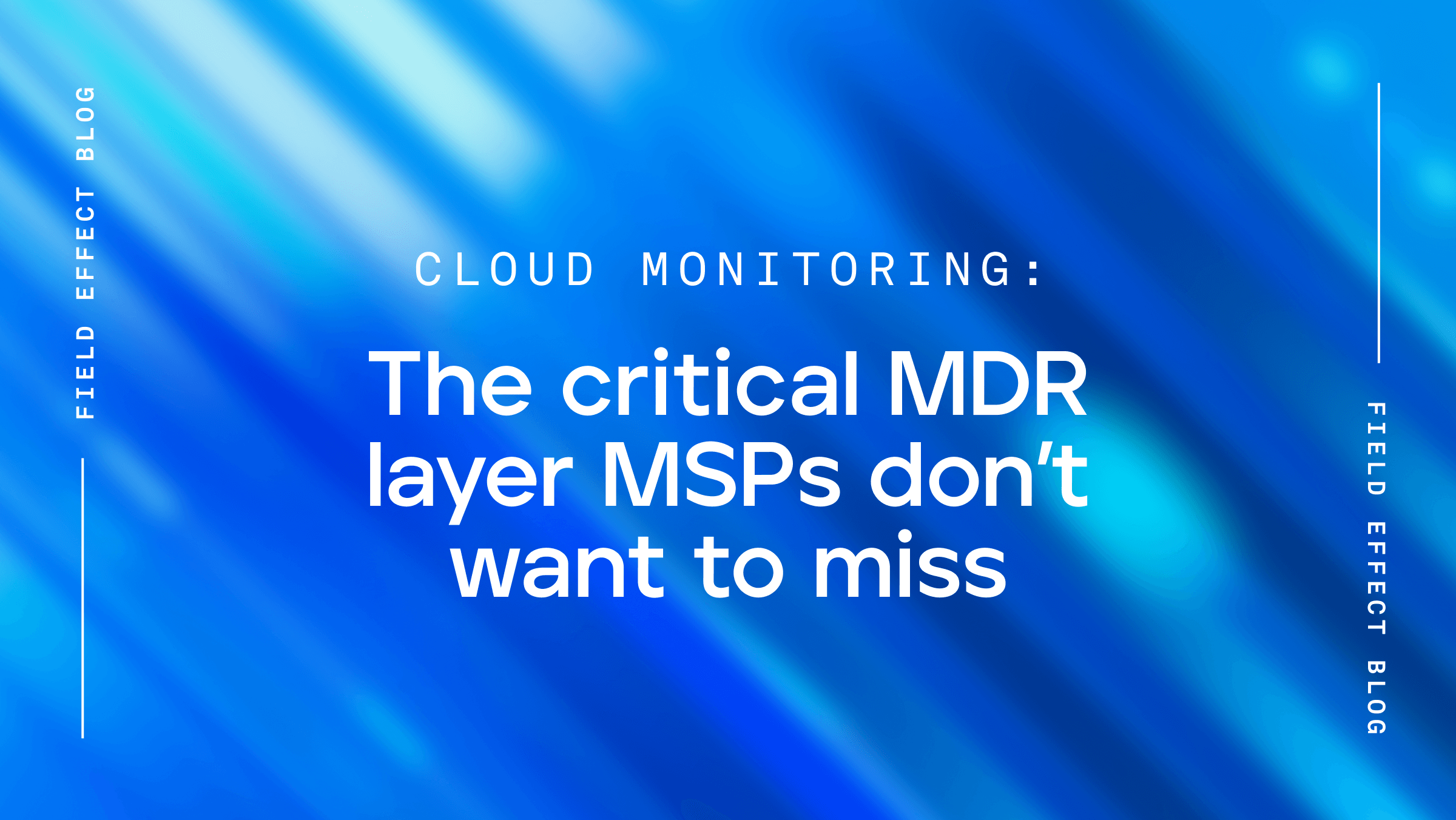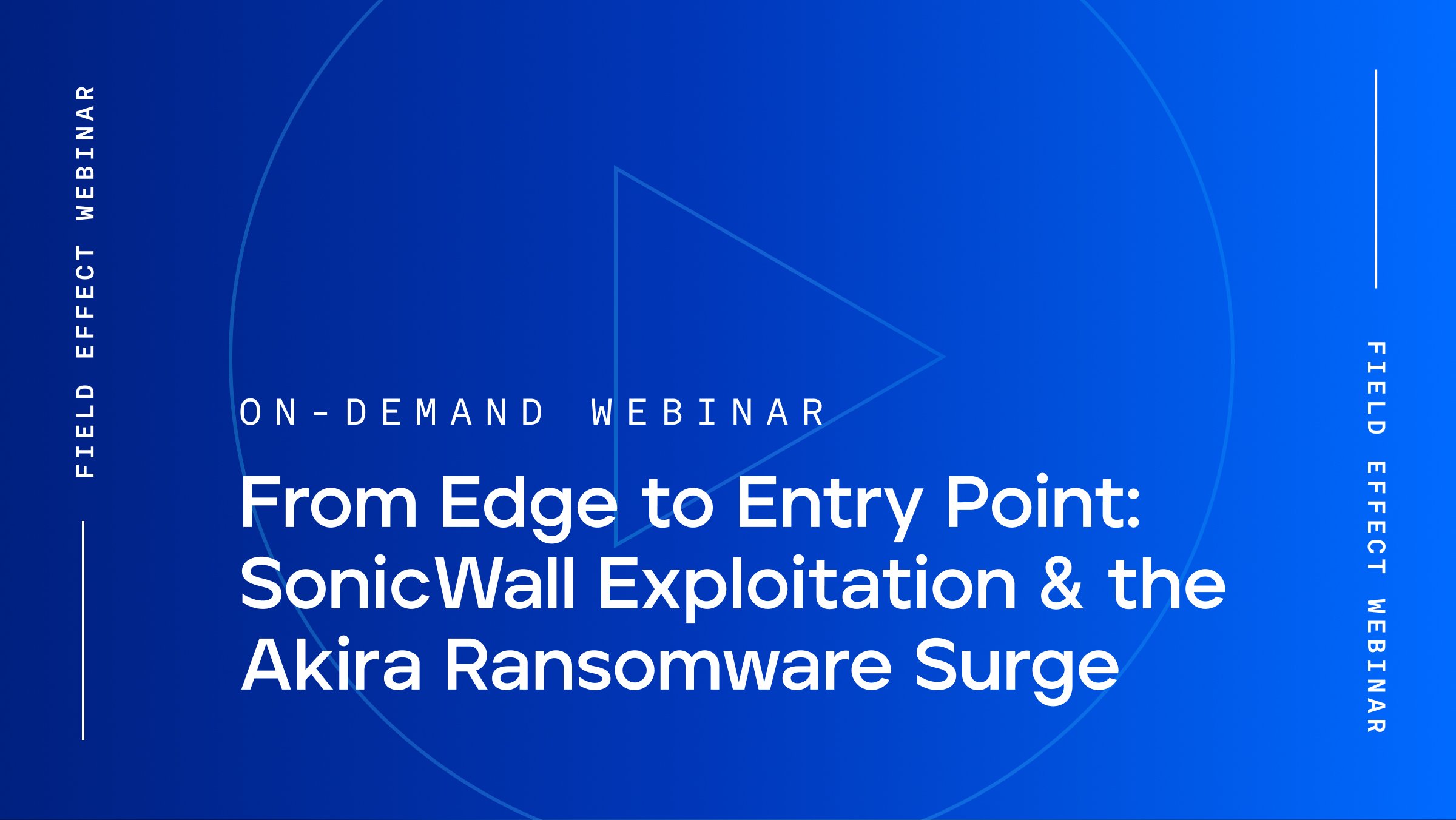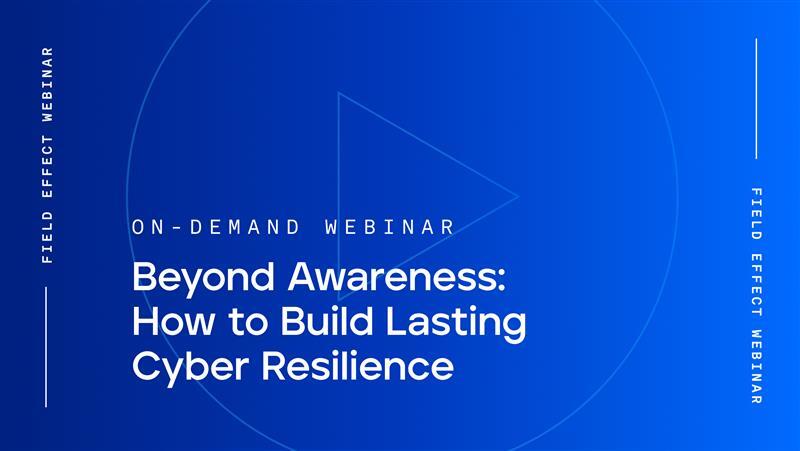
Blog Post
Cybercriminals never stop looking for new ways to breach organizations. As they update their methods, businesses need to respond to keep themselves safe.
But what does that mean in practice? In other words, what are the specific changes your business needs to make to stay safe as cyberattacks and threat surfaces continuously evolve?
The answers often lie in a cybersecurity assessment, which helps companies evaluate their cybersecurity capabilities and attack readiness.
We take a closer look at cybersecurity assessments and how they work, highlighting some examples of what one could do for your business below.
The way cybersecurity assessments work can vary based on the company you hire to do them. At Field Effect, our cybersecurity assessments have three phases.
Cybersecurity assessments start with a survey that identifies your company’s key risks.
This is typically a straightforward process of answering yes-or-no questions, organized into groups based on their topics. Field Effect’s cybersecurity assessment uses questions based on deep industry experience and common security standards, such as the NIST CSF and ISO27001.
In the next phase, our experts analyze your survey results and use them to create a tailored roadmap for improvement. Basically, we outline the actions your company should take to minimize its threat surface and maximize security.
We deliver the information to you in a detailed report, which includes your:
The report always uses actionable, easy-to-understand language, so you're not stuck wondering how to get started.
We’ll also schedule a one-hour interactive session between your stakeholders and our security experts. This gives you the chance to go through the full report one-on-one with cybersecurity professionals who can answer your questions and provide clarity.
The final phase of the cybersecurity assessment process is implementing the changes we recommend in your report. We guide you through this process as well, along with three months of our managed cybersecurity solution, Covalence, to get you started.
Companies don’t have unlimited time or money. They often need to justify spending limited resources on a cybersecurity assessment over other options for enhancing security.
So, why should you choose a cybersecurity assessment over another cybersecurity tool or strategy? Here are four key reasons.
Cybersecurity assessments provide a foundational view of where your company currently stands with its cybersecurity. They tell the whole story, which is important because you don’t want to make critical security decisions with missing details.
So, the first piece of value you can get from completing a cybersecurity assessment is an overarching view of your defense that you can rely on for decision-making purposes.
Good cybersecurity programs focus on risk management. They allocate their existing resources in ways that reduce the risks of cyberattacks as much as possible.
Completing a cybersecurity assessment can help you identify which areas of vulnerability pose the biggest threats to your organization’s well-being. That way, even if you can’t afford to implement all the findings in your assessment report immediately, you at least know where to start.
This can help you make as much progress as possible with the skills and time you have available today, not next month or next year.
Even the most cyber-ready organizations still typically have room for improvement. Whether your organization is just starting to focus on cybersecurity or has been working at it for a while, an assessment can help you determine what comes next.
Our analysts leverage their expertise to help you find not just the highest-priority action items but those that will get you the biggest return on your investment.
Cybersecurity assessments may be able to save your company money in more than one way. First, they help you discover and address your biggest gaps. That alone can save you a significant amount of money, since the average data breach now costs companies $4.45 million, according to IBM.
But you can also use your assessment results to figure out the best ways to allocate your limited cybersecurity budget. This can help you avoid waste.
For example, if you’re just starting to think about cybersecurity, generalized online guides may tell you to purchase a dozen or more tools. However, your cybersecurity assessment results could highlight the specific tools your company needs to meet its goals.
This more personalized advice can help you avoid unnecessary spending while working toward your ideal security posture.
At Field Effect, we evaluate more than a dozen factors when completing your cybersecurity assessment. This depth ensures you get the full picture of your organization’s security, empowering you to make more informed decisions.
To illustrate the value of this, let’s look at a few examples. Here are some categories we’ll look at while completing your cybersecurity assessment.
Effective cybersecurity starts from the top. Organizations need to have a clear cybersecurity leader in place so that cybersecurity gets the attention it deserves from senior leadership.
Leadership also sets the cybersecurity agenda for the company, including things like documenting acceptable risk, and takes ownership of upholding critical security standards.
In larger organizations, this role is typically filled by a Chief Information Security Officer (CISO). But smaller organizations should have clear cybersecurity leaders, too. We typically recommend giving the job to a Chief Security Officer if you have one, or another senior leader if you don’t.
Field Effect’s cybersecurity assessment analyzes your current leadership situation and recommends ways to improve it, if necessary. Here’s an example of how that might look.
“Document the acceptable level of residual cybersecurity risk that the organization is willing to allow for its IT systems.”
We may follow this up with more specific recommendations about security controls and techniques that could benefit your organization.
Organizations also need strong cybersecurity policies in place. These set expectations and help employees understand how they can contribute to your company’s cybersecurity, or detract from it, based on daily actions.
Policies also put your cybersecurity strategy into writing, a key step toward improving your security posture.
We typically recommend starting with an Information Security Policy, which sets the minimum standards and expectations for protecting the confidentiality, integrity, and availability of all information systems and data. It also gives guidance on protecting the privacy of all personal information held by the company and the safety of all systems operated by the company.
Your policy should note who is responsible for information security within your organization and the minimum technical measures that must be in place to protect your informational assets.
It’s also important to ensure all IT assets that connect to corporate resources have effective cybersecurity controls in place.
If you aren’t tracking software and hardware assets, you don’t know when they’re being misused. You also won’t know if they have misconfigurations or other vulnerabilities that may put you at risk.
And finally, it’s easier to miss critical security updates when you don’t have a standard system in place for making them.
We recommend creating a centralized asset inventory that lists all critical hardware and software in a single place. This should include servers, workstations, mobile devices, networking devices, and cloud resources.
For each item, try to note the following pieces of information:
Another element of effective cybersecurity is limiting access to confidential networks, software, and data. Ideally, you should only give employees access to a protected resource if they need that access to do their job.
This is sometimes called the principle of least privilege. Your cybersecurity assessment will include a personalized recommendation for how to implement this in your organization.
“Monitor for changes to user accounts or groups and generate notifications so administrators can validate such changes.”
By monitoring for unusual changes to accounts or groups you can detect a threat as they try to escalate their access privileges within your network.
The default settings on software and hardware configurations are rarely enough to protect organizations from determined actors. That’s why your cybersecurity assessment report will also focus on system hardening, which is the systematic process of reducing vulnerabilities across applications, systems, infrastructure, and beyond.
We recommend starting with a primary system image and hardening it according to industry standards. This is like an idealized version of the system that you can replicate whenever you need to, so you don’t have to worry about hardening each new iteration from scratch.
This is a process you can follow for every tool your company uses. Doing so can be a much easier way to harden your systems at scale. Your cybersecurity assessment report will provide individualized instructions for this process based on your organization’s unique needs.
Vulnerability management is an important part of reducing your organization’s threat surface. It’s the practice of providing clear guidance around system and software update requirements.
Software updates patch known vulnerabilities. If you don’t complete yours promptly, you could leave your company vulnerable to threats. Implementing a clear update policy is a good way to avoid this outcome.
That’s why we make vulnerability management part of our cybersecurity assessments.
Your first goal should be to ensure that all systems and software receive updates promptly. For anything not critical to your business, consider enabling and enforcing automatic updates.
But there are cases where that isn’t possible. In those situations, you need backup controls in place to keep your company safe. That way, even if a hacker can breach software that hasn’t been updated, they can’t do anything with their access. For example, you might automatically quarantine any user that misses a software update.
Data loss can be extremely costly to modern organizations. It can erode consumer trust, remove a competitive edge, and permanently damage your company’s reputation.
That’s why cybersecurity assessments also look at your risk of data loss, which can be intentional (such as a cyberattack or disgruntled employee) or unintentional (like accidentally removing the wrong USB drive).
Field Effect recommends that organizations prohibit using removable media like USB drives. We also recommend enabling disk encryption on all removable assets and encrypting data before transferring any private media.
Just make sure that you have a way to exempt employees and managers from these requirements when necessary. Otherwise, you may be unable to act quickly during a breach.
Cybersecurity can be like a never-ending game of cat and mouse. As you plug vulnerabilities, threat actors constantly hunt for new ones. This can make it challenging to understand how safe your company is today and what it needs to do to minimize risk moving forward.
Cybersecurity assessment services are an answer to this problem. They tell you everything you need to know about your organization’s security today and point you in the right direction for the future. The net result is a more secure business without having to spend as much to get there, and without needing to spend years learning every aspect of cybersecurity on your own.
But don’t take our word for it. Get a cybersecurity assessment to experience the value they can bring to your company. Ask us about our Cybersecurity Assessment services today.


